Once you’ve decided to take the leap into vanlife, the next step is choosing your van. Picking the perfect vessel to help you drive into your new life can be overwhelming – it was for us. There are so many different vehicles out there, from roomy Sprinter vans to old school Westies to super stealth cargo vans – and more.
After weeks of researching, weighing pros and cons, and scouring Craigslist, we finally settled on Gnomie, our badass Chevy Express high top conversion van. For us, conversion vans offered the perfect combination of space, headroom, stealth, and affordability that no other vehicle we found could match.
The best van for you depends on your needs, wants, priorities, and budget. But here’s why we think high top conversion vans are awesome, and why we chose one for our home on the road.
Read More: 10 Chevy Express Van Build Examples You Need to See
What is a Conversion Van?
Conversion vans are typically American-brand full-size passenger vans (Ford Econoline, Chevy G-Series/Express, Dodge Ram Van) that have been converted into comfy family travel vehicles by third-party manufacturers. These vans may be decked out with a media center, mood lighting, captains chairs, and a rear bench seat that folds down into a bed. While you can find low roof conversion vans, in our opinion the high topper is much of what makes these vans so great.
7 Reasons We Love Conversion Vans
1. They’re Affordable Compared to Other Vans
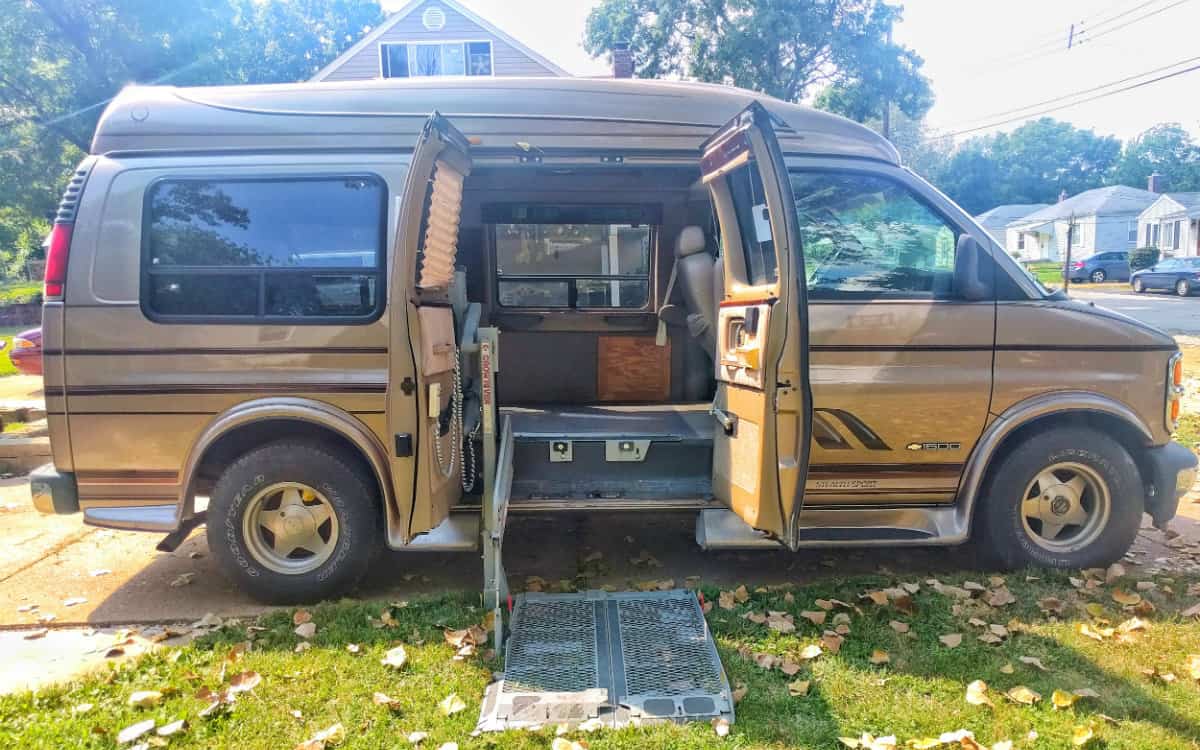
If saving money is your primary concern, conversion vans are a great choice. Older ones are very affordable, especially compared to many other vans out there. As vanlife grows in popularity, Westies are getting more and more expensive – and that’s before you shell out thousands of dollars (or many hours of your time) getting them mechanically road ready. Newer vans like Ford Transits and Ram Promasters are too pricey for many.
But it’s not hard to buy a nice conversion van and build it into the DIY rolling tiny home of your dreams, all for much less than buying just the base vehicle of any other van. We bought Gnomie for only $1500, and that plus new tires, taxes and registration fees, some mechanical fixes, and our entire conversion cost us just over $10,000 in total.
2. Low(er)-Mileage Vehicles in Good Condition are Easier to Find
Conversion vans are leisure vehicles. Most used ones you’ll find for sale were only driven once or twice a year on road trips, and those road trips likely consisted of mostly highway miles. So even though that sweet high top van you’re looking at may be from the mid-nineties, it’s probably in great condition with fairly low miles.
Contrast that with cargo vans. Most cargo van owners buy them for work, and only sell them after they’ve beaten them into the ground and racked up a ton of miles. While you may be able to find a newer, affordable cargo van out there, chances are it’ll be in worse condition and have much higher mileage than a comparably-priced conversion van.
Our van is a ‘96, but it only had 100,000 miles on it when we bought it in 2016. And it’s in great condition – we’ve had very few problems with it, and every mechanic who’s seen it has told us how clean the engine is.
3. Extra Headroom Makes the Interior Feel Very Spacious
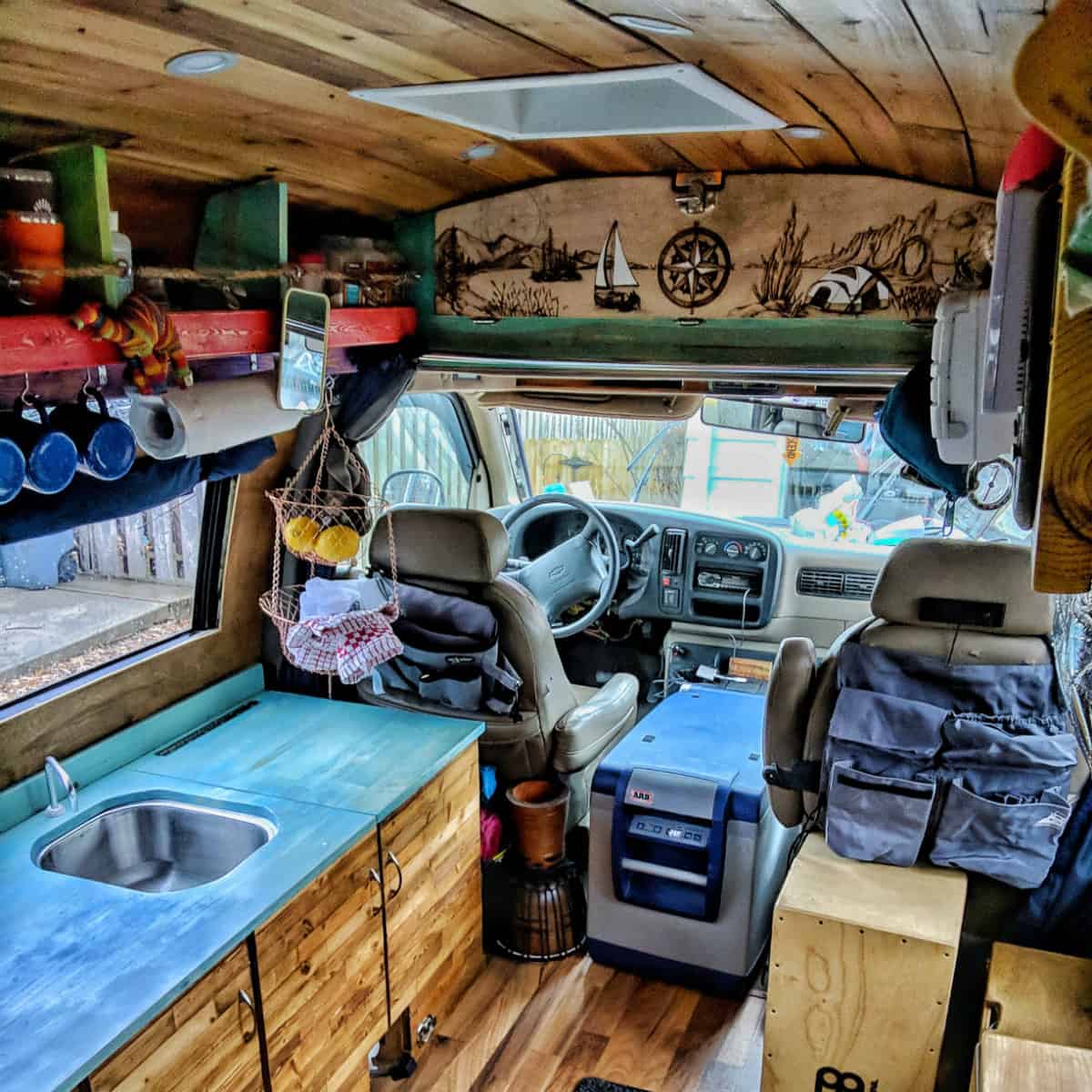
The extra headroom that a high topper adds was something we honed in on pretty quickly in our van search. John didn’t think headroom would be a big deal at first, but Jayme had grown up with a conversion van and knew how awesome the extra space would be, especially for someone as tall as John. She convinced John to nix anything without a high top, and believe us, John is happy that she did!
4. So Many Storage Options!
Conversion vans are awesome for storage. The high topper adds extra storage space that other vans just don’t have, which frees up room to create your perfect layout. Because of our high topper, we have natural shelves in the back and in the front above the cab. We keep our dry food above the cab, and we’ve built the rear shelf into our clothes closet.
Most conversion vans also have barn-style swing out doors that give you even more options for mounting storage, or fold out tables, or anything else you can think of, that sliding doors make impossible. This isn’t specific to conversion vans, but it’s still a great feature.
5. Move-In Ready (if you’re not picky)

If you just want to hit the road tomorrow, conversion vans already have factory-built interiors that are mostly move-in ready. The typical conversion van comes with a nicely-upholstered interior with basic vehicle insulation, curtains on the windows, and a rear bench seat that folds down into a bed (many are even battery-powered for push-button conversion to “bed mode”). Just throw in a cooler, some auxiliary batteries with a a DC-DC charger, (or a portable power station like the Bluetti AC200P), and you’re good to go. You can always add more amenities on the road as needed.
6. Awesome Base for Custom Conversions
If you’re like us and enjoy the process of turning a base vehicle into a perfectly-custom and homey living space, then a conversion van is a perfect blank slate for your van build. Once you’ve gutted it, building out a conversion van is just like building out a cargo van – except you have the added flexibility of a high topper. We also really love all the windows in our van, but it’s easy to put a wall over them if you want something a little more closed in.
7. Widely Available Parts and Mechanics
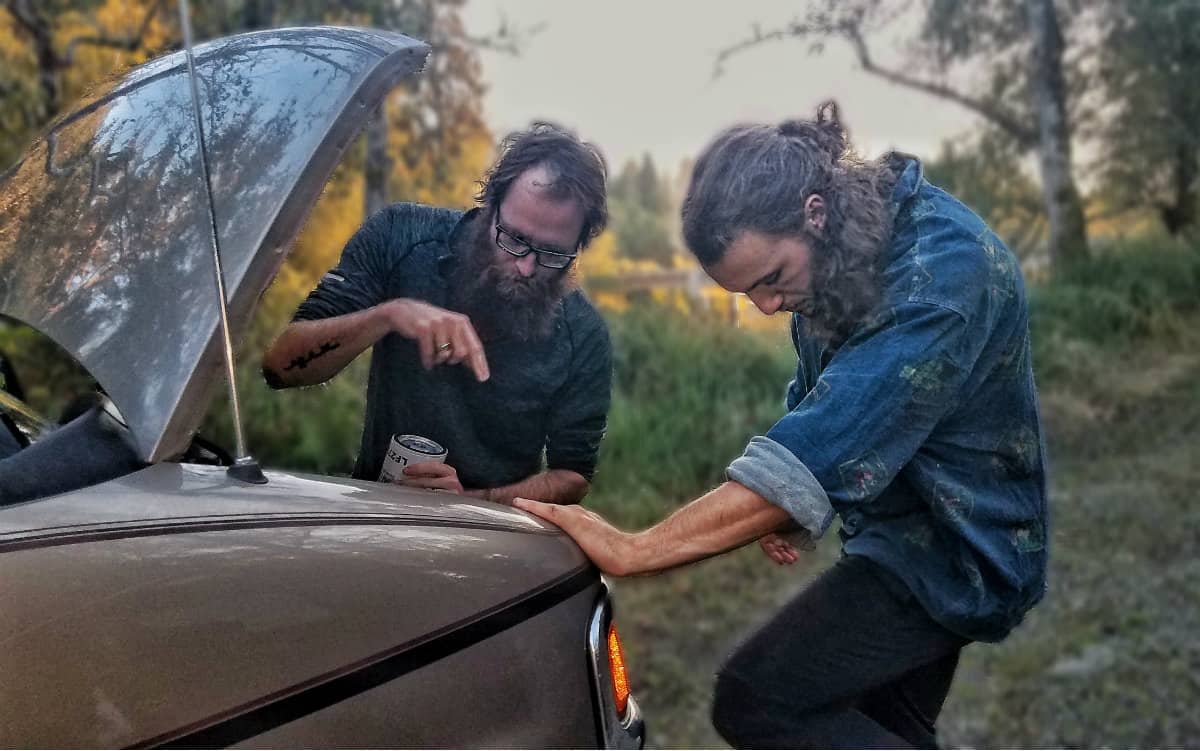
Older Ford, Chevy, and Dodge van models are common, and their general designs haven’t changed much in years. That means parts are easy to find, and mechanics everywhere know how to work on them – which really comes in handy when your van breaks down in the middle of nowhere. If you get a Sprinter or VW, on the other hand, it can be tougher to find parts and qualified mechanics, and any work you need done will be much more expensive.
5 Things We’re Not the Craziest About
1. Fiberglass Topper Adds Challenges to a Van Build
While we love the added features that our high top makes possible, it also creates some interesting challenges during a van build. Most toppers are anything but flat, and feature curved aerodynamic styling.
This looks cool, but it makes it a total pain in the ass to mount things like solar panels, vent fans, or roof racks. And the relatively flimsy fiberglass material means you may have to use some creative methods to insulate it and put up a ceiling.
2. Conversion Vans Need to Be Gutted for Custom Build Outs
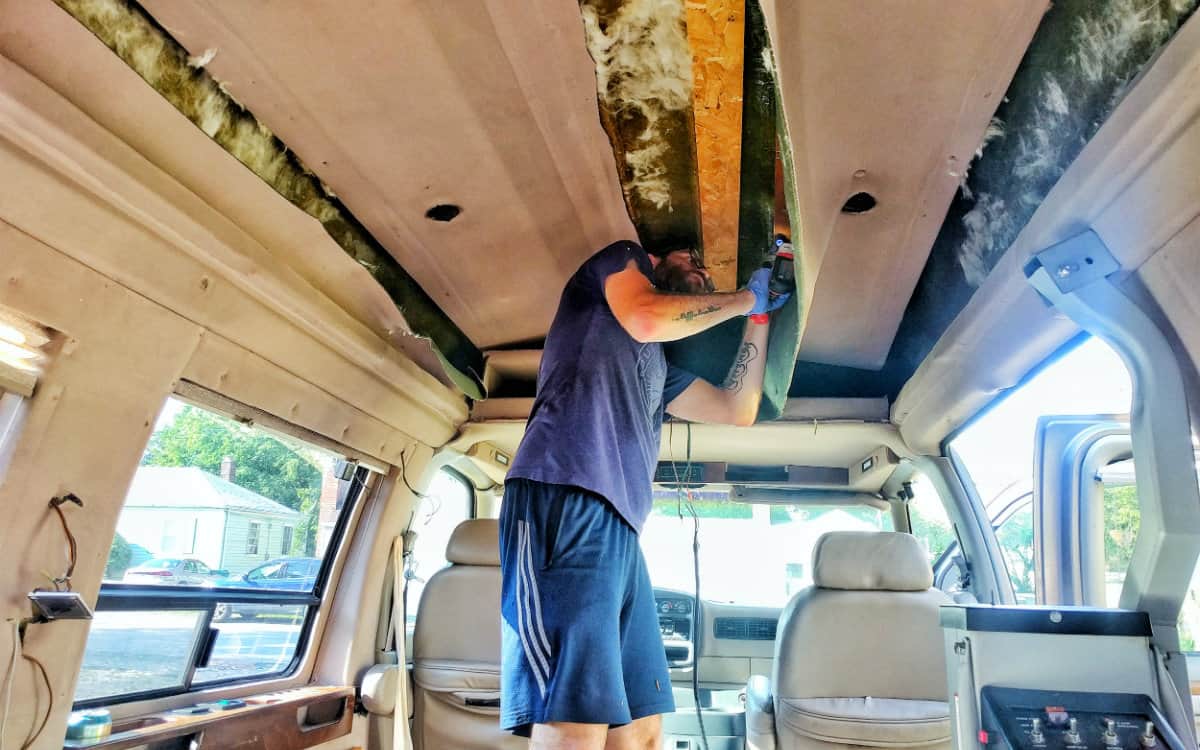
You’ll need to totally gut your conversion van if you want a blank slate for a custom build out. This means ripping out electronics and upholstery, deciphering a mess of unnecessary wiring, and possibly removing heavy and complex components like wheelchair lifts and rear air handlers.
This adds time, effort, and potential complications at the beginning of the build process that you just won’t have with a cargo van base. It took us a few days of work to completely gut our van, including removing the wheelchair lift it came with. And we just recently took out our rear air handler unit to free up more storage space (before we even thought about doing this, we had to have a qualified mechanic cap off and divert the coolant and AC hoses running to the back).
3. Not the Stealthiest (but stealthier than Westies)
If urban stealth camping is your thing, then it may be a better idea to go with some sort of cargo van with few (if any) windows. Cargo vans are so common that they just blend into the background, and you can easily add a utility roof rack to help conceal your van life solar setup and vent fan.
Conversion vans stick out a bit more than cargo vans, and you’ll have a tougher time hiding the fact that you live in one. That said, conversion vans are much stealthier than something like a Westfalia, and they’ll work fine for stealth camping in a pinch.
4. NOT Standing Height (if you’re tall)
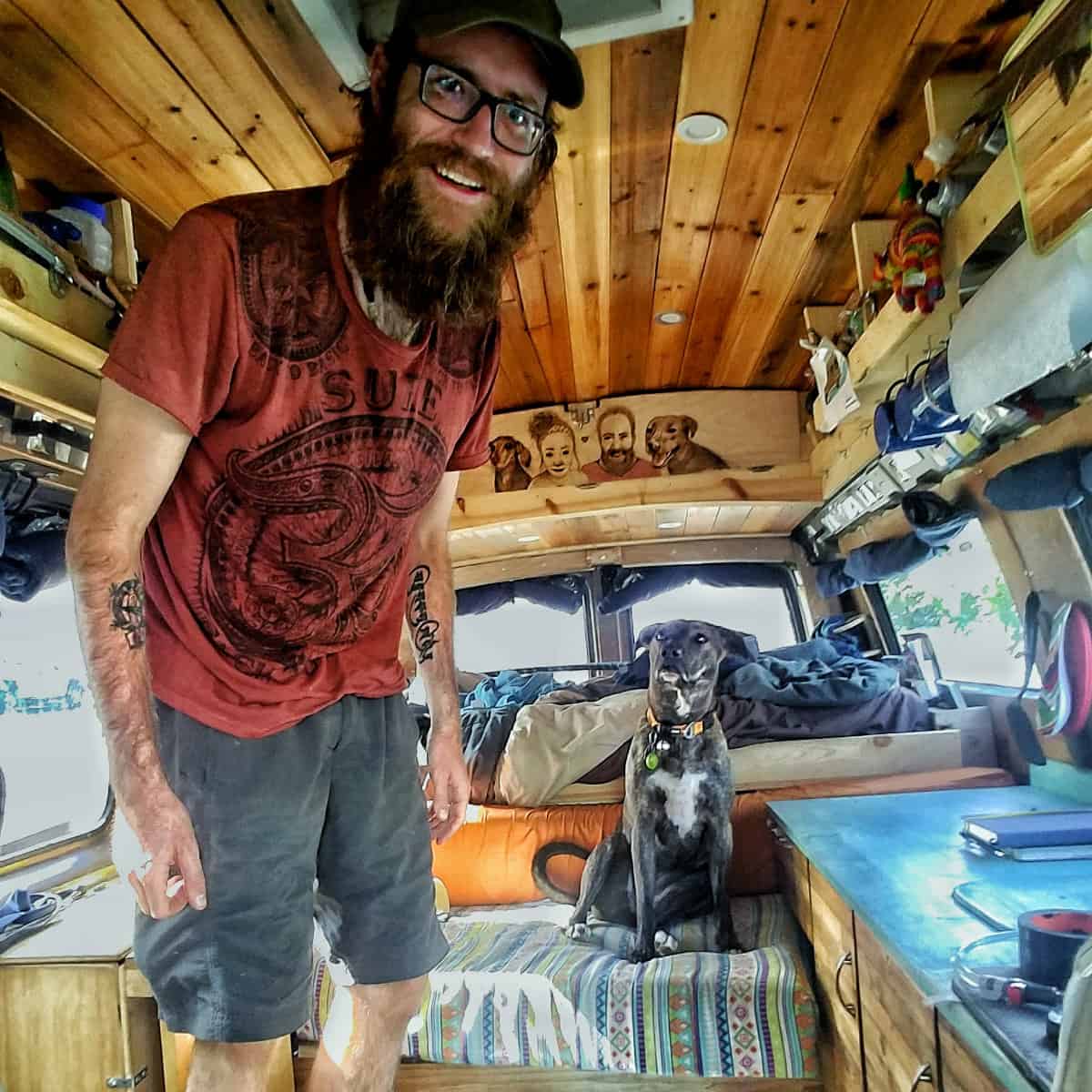
Even though our van’s high top is an awesome feature that makes the inside feel very roomy, it’s still too low for most people to stand inside our van. Jayme can stand up fine, but John is 6’2” and has to hunch, sit, or kneel.
Depending on your priorities this may not be a big deal – and again, the high top adds so much more space you don’t have in low roof vans – but it’s also really nice to be able to stand up in your living space. We love our van to bits, but we’re also planning on something John can stand up in whenever we decide to upgrade.
If you like the idea of a standing-height van but don’t want to throw down for a Sprinter or Ford Transit or Dodge Promaster, you can easily buy a cargo or passenger van and have a custom high top put on for a few grand.
5. Gas Mileage Isn’t the Best (but also not the worst)
This is a common problem with vans and large vehicles in general, unfortunately. Our van gets about 15 MPG, which isn’t the best, especially if you care about pollution and climate change like we do. But that’s also a better MPG than we were expecting, so it could certainly be worse.
Newer vans like Sprinters and Ford Transits can see gas mileage up into the 20-22 MPG range – which is better, but still not great. But until someone figures out how to make a practical van that runs entirely on RV solar panels, we’re stuck with what’s available. And from a holistic perspective our lifestyle is much lower impact than most, so us van nomads can justify burning a little more fuel here and there.
It’s Ultimately About the Freedom of the Open Road
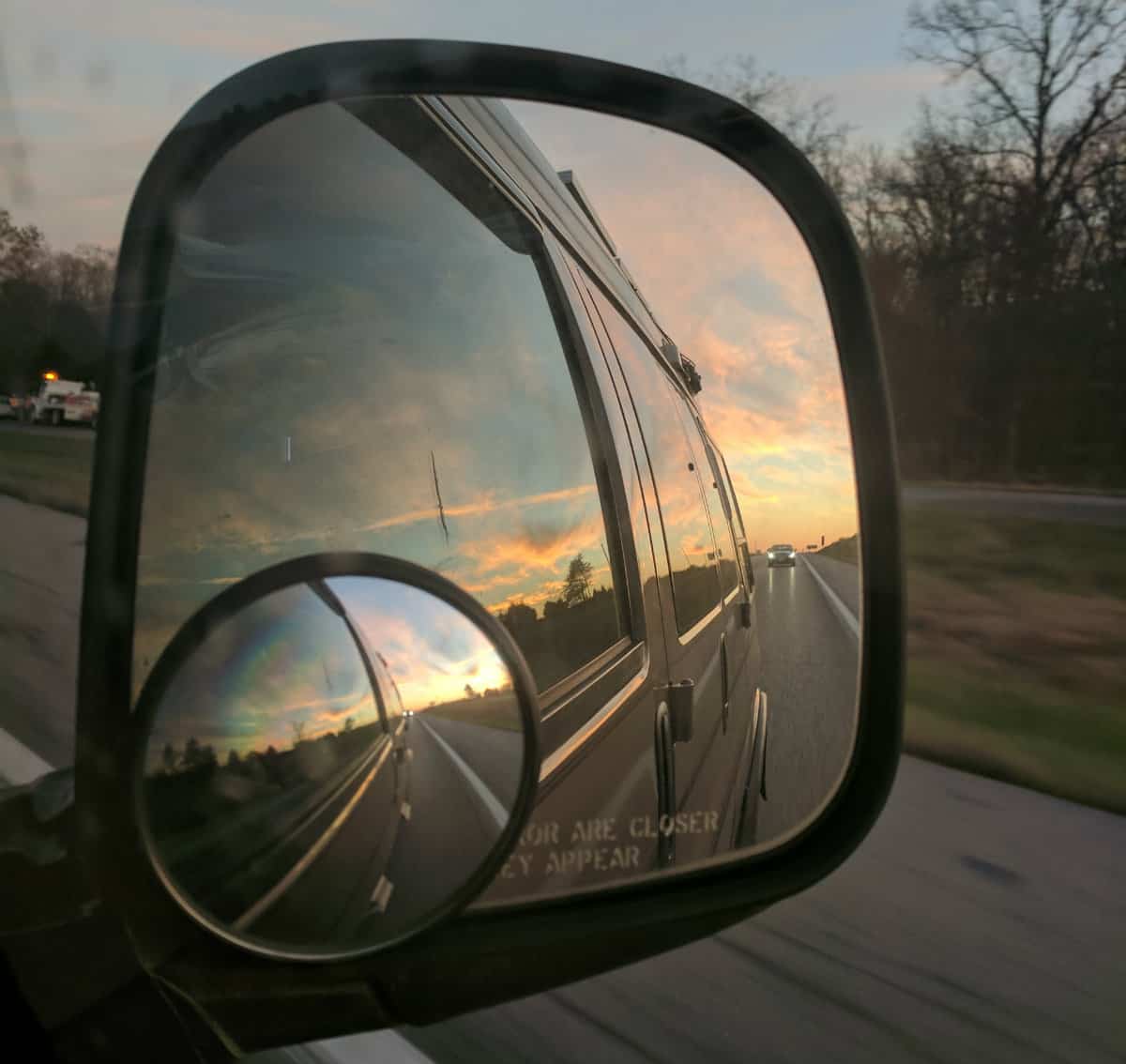
We love conversion vans, and we think they’re a great option for anyone choosing to live a nomadic lifestyle. But you may have different needs and priorities that make something else a better option for you. We recommend checking out our choosing your van section for a detailed rundown of the pros and cons of other common van types.
No matter what vehicle you choose, all of us vanlifers are united by our love of freedom and our desire to create our own lives. That’s what this is really all about. The specific vehicle is just that – a vehicle. So get out there on the road and start building your dream!
For more vanlife tips and awesome build guides, be sure to follow us on Instagram @gnomad_home and on Facebook. Cheers!

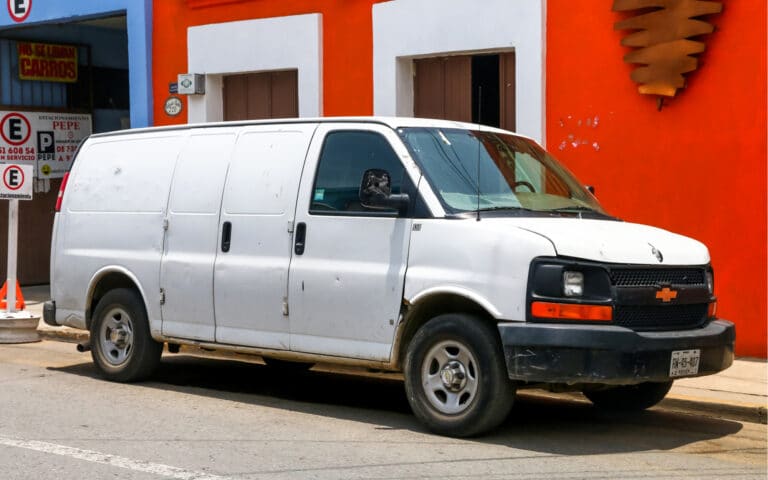
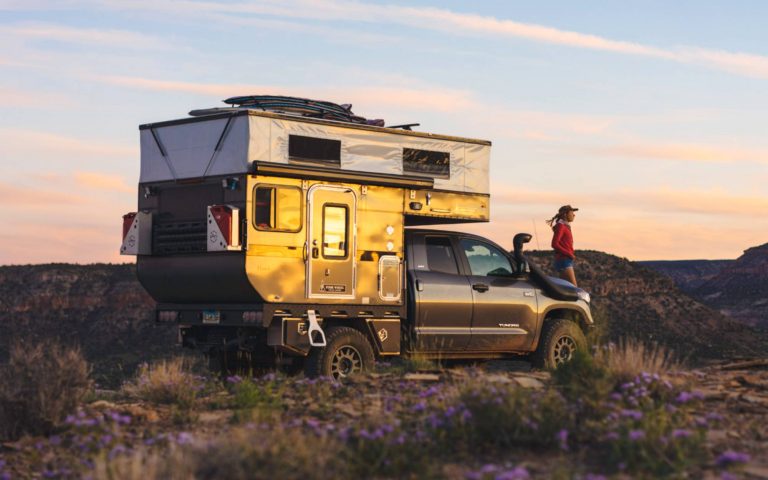
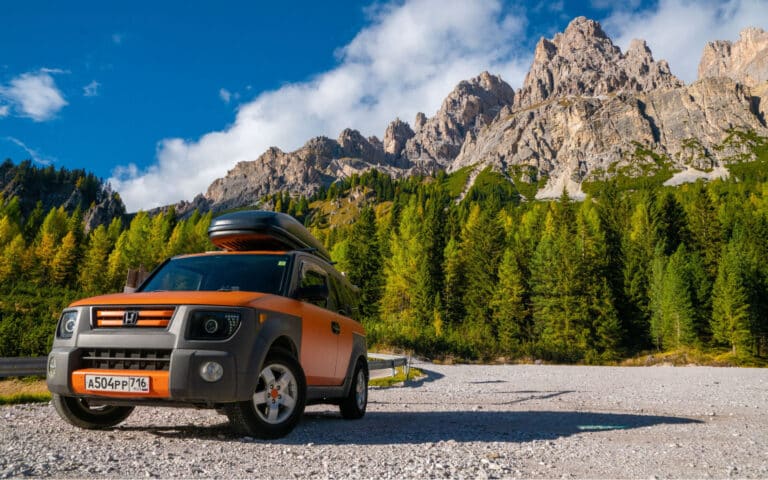
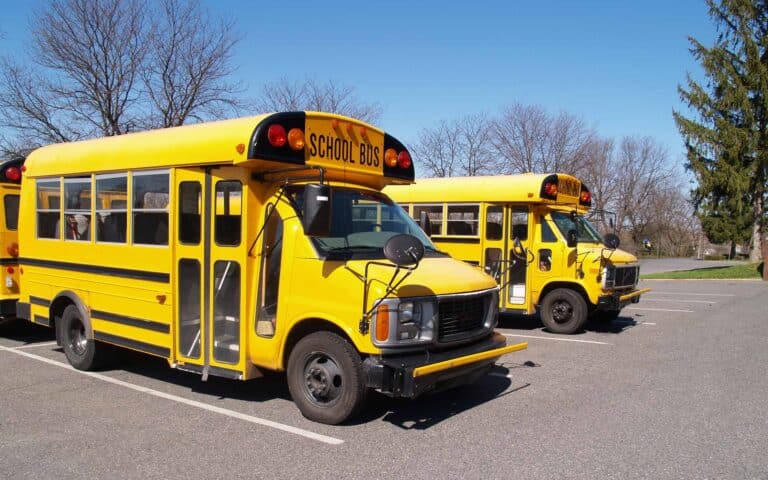
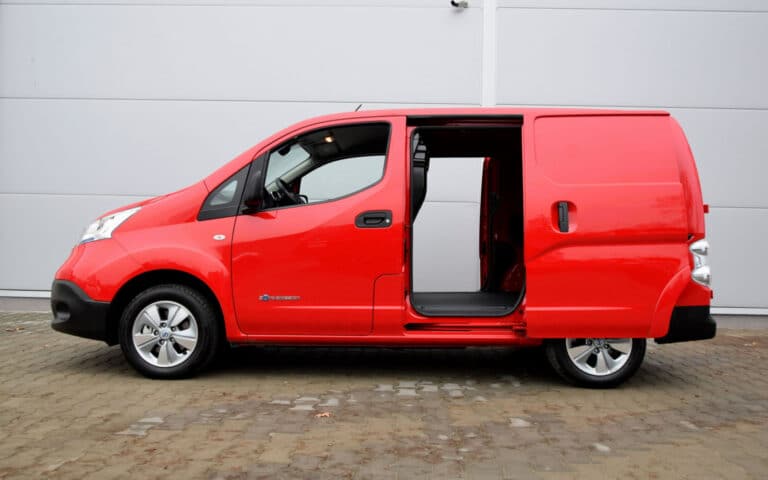
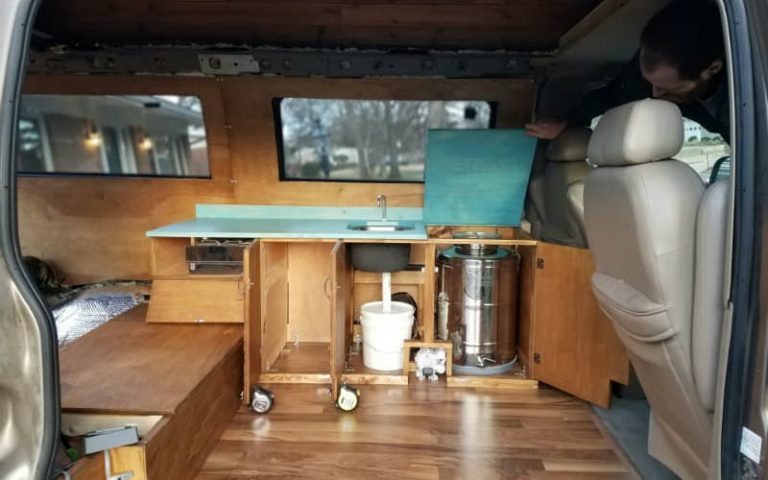
I just purchased a 2000 high top Ford Econoline E250 Conversion van, 104,500 miles, V8. It has leather interior and already has cupboards at the top for storage. Because I am only 5’2, I can stand up fully!!! The center seats are there, but because I want to travel with my husky and make a little kitchen system, I will need to remove them, but I love the van! Right now I am on the search for a powerstation so that i can work remote and power my laptop, phones, possible fridge, record player, etc. Any advice on the power… Read more »
Hi Jewel, sounds like a perfect van for you! Getting all of those things for under $1000 will be tricky. Your best bet for a power station is the Bluetti EB70S, which gets you a 716Wh (60Ah) LiFePO4 battery for about $500 (going bigger than that puts you in the $1000 range). For solar panels, skip the expensive foldable panels that Bluetti and others sell, and buy some cheap BougeRV solar panels to mount on your roof. With an MC4 to 8mm adapter, you can use them to charge your power station. For the fridge, BougeRV and Alpicool are both… Read more »
I’m trying to find the best voltage for my inverter so I won’t drain my battery I have a savanna 1500 and I was thinking about adding another battery
Hi Donald, based on your question, I believe you mean wattage, since you’ll basically only be dealing with 12V inverters in a campervan. There are two factors to sizing an inverter: your needs, and your battery capacity. From a needs perspective, you want to get an inverter that’s big enough to power what you need to power. For example, if you want to run a 1200W blender, then a 1000W inverter won’t work for you. But you also need to make sure you don’t get an inverter that’s too big for your battery bank, which is what it sounds like… Read more »
Hi. I own a 96 gmc savana high top conversion. Travelled with my family up and down east coast. We live in Charlotte nc. Planning to drive to Grand Canyon this summer. Any advice on travel and rig set up?
Hi Michael, that all depends on what you want to do. Are you just travelling in your rig, or are you planning on sleeping/camping in it as well?
How much does your rig weigh overall, and what gas mileage are you getting, please? Would you consider doing a post on weights of vehicles and their contents and effects on miles per gallon? As I research van life as a possible future option fuel economy and the factors that affect it are very real concerns, yet not something I have found is much discussed.
Hi Anne, great question! We actually do not know how much our vehicle weighs, or how much weight we added from the build. I agree that this is an important topic, and it’s something we’ve talked about covering in the future. We definitely plan on weighing things in when we do our next build. As far as gas mileage, we get about 15 MPG. Hope that helps!
~John
Hello! Great article. I’m currently in the process of converting a 2003 Chevy Express. Once I ripped everything out, I found the same thing you mentioned…the air handler unit. I took it to a mechanic and he quoted $400 to cap off/divert coolant. Was that close to your experience or should I shop around?
Hi Allison, thanks for reaching out! That sounds about right – the job involves evacuating the system, cutting the lines, custom-fabricating a cap, then recharging the system (make sure he diverts the heater line as well if there is one, but that can be done with a simple hose clamp). I think we paid a bit over $300 for all of that – $120 to a metal fabricator to make the cap, then the rest to an auto shop for the AC/heat work. This was in Taos, NM back in 2017, and prices will also vary by location. Once all… Read more »
Wow! Ok thanks for all the details. I appreciate it. 🙂
The van I bought already had the back A/C capped off…the heater is still there, but like John said, it’s an easier fix than the A/C! 🙂 Congrats on your van!
good, thanks
Hi, y’all. I bought my 1997 Chevrolet Express 1500 conversion from the original owner’s son off of Craigslist. I bought it in 2017, with 109K miles on the 5.7L, 350 engine. They bought it new as a cargo van, and had MidWest Vans in Elkhart, IN trick it out to a conversion. The son said it was his dad’s one indulgence in their marriage. It’s a beautiful van, very well taken care of. The only thing that suffered in the 20 years in Chicago was the paint job. I paid $2750 for it. I’ve only invested a new set of… Read more »
Hi Deb, sounds like you’ve got a great vehicle there! We’re glad we were able to provide some clarity! Best of luck on your journey!
update: got all the electrical done on the van!!! All that’s left is to do a solar panel, and I’m leaning toward a suitcase instead of mounting a panel on the roof. It makes more sense to be able to park in the shade, and run the panels out to the sunshine. 🙂 I went with 2 230 amp Hour golf cart batteries. And did the smart battery isolator you recommended. Thanks again for all the information you post. Now, if the stay-at-home thing gets lifted, I’m all set to start traveling and camping. For now, I’m parked on the… Read more »
I think it is so important that you mentioned that if you like camping in cities, you should get a van that has small or few windows. My sister and her husband told me they are thinking about getting a van and convert it by themselves. Personally, I think it would be great for them to do some research and find the best accessories for this project.
Steve Henley my name,Hello my concern is with purchasing (1999/2003) conversion van,GMC savanna or Chevrolet at reasonable price,in descent running and appearance Anchorage Alaska I live(601)818-8077 please let me know what’s going on thank you
Hi Steve, thanks for reaching out! We found our van by searching around on Craigslist. We highly recommend searching different nearby Craigslist pages – we found out van about 3 hours away from where we lived at the time. Search Tempest (https://www.searchtempest.com/) allows you to run a search across multiple Craigslist locations, which we’ve found very helpful. Another great place to look for vans is Facebook Marketplace. And, if you’re willing/able to look in Canada, they have their own version of Craigslist called Kijiji (https://www.kijiji.ca).
Hope that helps, and best of luck with your search!
~John
What do you think the max height of someone who could stand comfortably in your van be?
The floor-to-ceiling height of our van is about 5’5″, but you can get another 2″-3″ if you stand right under the opening of the vent fan. Hope that helps!
~John
How tall is Jayme??
Hi Althea, She’s about 5’3″.
I came across a 2013 GMC hightop Conversion van, extended body and wheelbase, I got it for the payoff, 65,000 miles, 6 liter engine so not the best gas mileage , so far 11-13 miles per gallon, too many seats but I love the van, and it’s maxed out, as you said, big tv, surround sound, USB ports all along the walls, electric bench seat , power and heated driver and passenger seats , while it’s a little more than what I wanted, it’s kind of hard to complain cause you got too much, and at a very good price,… Read more »
Hi John, sound like a great purchase! With how those vans are decked out you could throw a bed in the back and hit the road if you wanted to. Best of luck!
~John
Thanks for suggesting that we get a cargo van with few windows if we like stealth camping in cities. My sister recently started stealth camping and wants to take me on a trip to show me what it’s like. We were thinking of renting a van for the trip, so I really appreciate the tip to rent one with few or no windows!
Of course Amy, good luck on the trip!